Uli Sattler
TransBox: EL++-closed Ontology Embedding
Oct 18, 2024Abstract:OWL (Web Ontology Language) ontologies, which are able to represent both relational and type facts as standard knowledge graphs and complex domain knowledge in Description Logic (DL) axioms, are widely adopted in domains such as healthcare and bioinformatics. Inspired by the success of knowledge graph embeddings, embedding OWL ontologies has gained significant attention in recent years. Current methods primarily focus on learning embeddings for atomic concepts and roles, enabling the evaluation based on normalized axioms through specially designed score functions. However, they often neglect the embedding of complex concepts, making it difficult to infer with more intricate axioms. This limitation reduces their effectiveness in advanced reasoning tasks, such as Ontology Learning and ontology-mediated Query Answering. In this paper, we propose EL++-closed ontology embeddings which are able to represent any logical expressions in DL via composition. Furthermore, we develop TransBox, an effective EL++-closed ontology embedding method that can handle many-to-one, one-to-many and many-to-many relations. Our extensive experiments demonstrate that TransBox often achieves state-of-the-art performance across various real-world datasets for predicting complex axioms.
Minimal Macro-Based Rewritings of Formal Languages: Theory and Applications in Ontology Engineering (and beyond)
Dec 18, 2023Abstract:In this paper, we introduce the problem of rewriting finite formal languages using syntactic macros such that the rewriting is minimal in size. We present polynomial-time algorithms to solve variants of this problem and show their correctness. To demonstrate the practical relevance of the proposed problems and the feasibility and effectiveness of our algorithms in practice, we apply these to biomedical ontologies authored in OWL. We find that such rewritings can significantly reduce the size of ontologies by capturing repeated expressions with macros. In addition to offering valuable assistance in enhancing ontology quality and comprehension, the presented approach introduces a systematic way of analysing and evaluating features of rewriting systems (including syntactic macros, templates, or other forms of rewriting rules) in terms of their influence on computational problems.
Ontology-based n-ball Concept Embeddings Informing Few-shot Image Classification
Sep 19, 2021



Abstract:We propose a novel framework named ViOCE that integrates ontology-based background knowledge in the form of $n$-ball concept embeddings into a neural network based vision architecture. The approach consists of two components - converting symbolic knowledge of an ontology into continuous space by learning n-ball embeddings that capture properties of subsumption and disjointness, and guiding the training and inference of a vision model using the learnt embeddings. We evaluate ViOCE using the task of few-shot image classification, where it demonstrates superior performance on two standard benchmarks.
Visual-Semantic Embedding Model Informed by Structured Knowledge
Sep 21, 2020
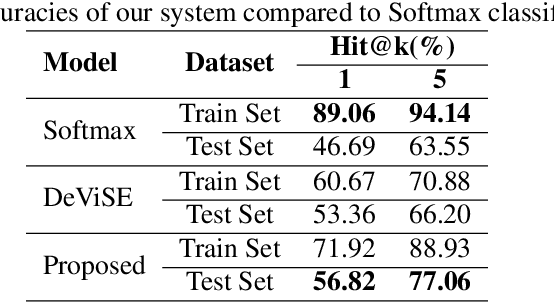


Abstract:We propose a novel approach to improve a visual-semantic embedding model by incorporating concept representations captured from an external structured knowledge base. We investigate its performance on image classification under both standard and zero-shot settings. We propose two novel evaluation frameworks to analyse classification errors with respect to the class hierarchy indicated by the knowledge base. The approach is tested using the ILSVRC 2012 image dataset and a WordNet knowledge base. With respect to both standard and zero-shot image classification, our approach shows superior performance compared with the original approach, which uses word embeddings.
Theoretical Foundations of Defeasible Description Logics
Apr 16, 2019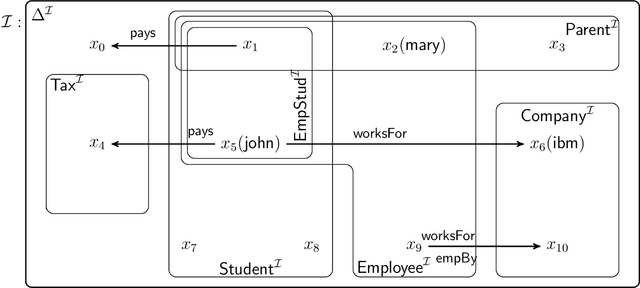
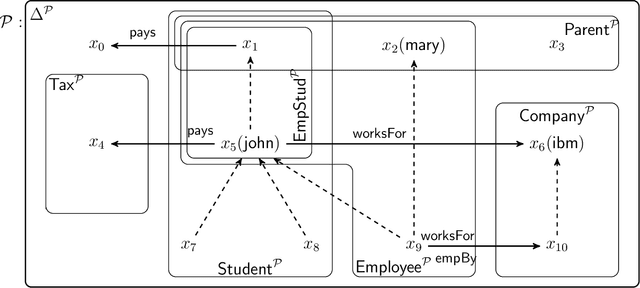
Abstract:We extend description logics (DLs) with non-monotonic reasoning features. We start by investigating a notion of defeasible subsumption in the spirit of defeasible conditionals as studied by Kraus, Lehmann and Magidor in the propositional case. In particular, we consider a natural and intuitive semantics for defeasible subsumption, and investigate KLM-style syntactic properties for both preferential and rational subsumption. Our contribution includes two representation results linking our semantic constructions to the set of preferential and rational properties considered. Besides showing that our semantics is appropriate, these results pave the way for more effective decision procedures for defeasible reasoning in DLs. Indeed, we also analyse the problem of non-monotonic reasoning in DLs at the level of entailment and present an algorithm for the computation of rational closure of a defeasible ontology. Importantly, our algorithm relies completely on classical entailment and shows that the computational complexity of reasoning over defeasible ontologies is no worse than that of reasoning in the underlying classical DL ALC.
Generating Ontologies from Templates: A Rule-Based Approach for Capturing Regularity
Sep 27, 2018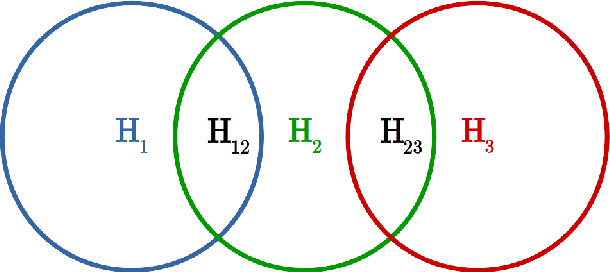
Abstract:We present a second-order language that can be used to succinctly specify ontologies in a consistent and transparent manner. This language is based on ontology templates (OTTR), a framework for capturing recurring patterns of axioms in ontological modelling. The language and our results are independent of any specific DL. We define the language and its semantics, including the case of negation-as-failure, investigate reasoning over ontologies specified using our language, and show results about the decidability of useful reasoning tasks about the language itself. We also state and discuss some open problems that we believe to be of interest.
Algorithm for Adapting Cases Represented in a Tractable Description Logic
May 16, 2014
Abstract:Case-based reasoning (CBR) based on description logics (DLs) has gained a lot of attention lately. Adaptation is a basic task in the CBR inference that can be modeled as the knowledge base revision problem and solved in propositional logic. However, in DLs, it is still a challenge problem since existing revision operators only work well for strictly restricted DLs of the \emph{DL-Lite} family, and it is difficult to design a revision algorithm which is syntax-independent and fine-grained. In this paper, we present a new method for adaptation based on the DL $\mathcal{EL_{\bot}}$. Following the idea of adaptation as revision, we firstly extend the logical basis for describing cases from propositional logic to the DL $\mathcal{EL_{\bot}}$, and present a formalism for adaptation based on $\mathcal{EL_{\bot}}$. Then we present an adaptation algorithm for this formalism and demonstrate that our algorithm is syntax-independent and fine-grained. Our work provides a logical basis for adaptation in CBR systems where cases and domain knowledge are described by the tractable DL $\mathcal{EL_{\bot}}$.
Syntactic vs. Semantic Locality: How Good Is a Cheap Approximation?
Jul 06, 2012


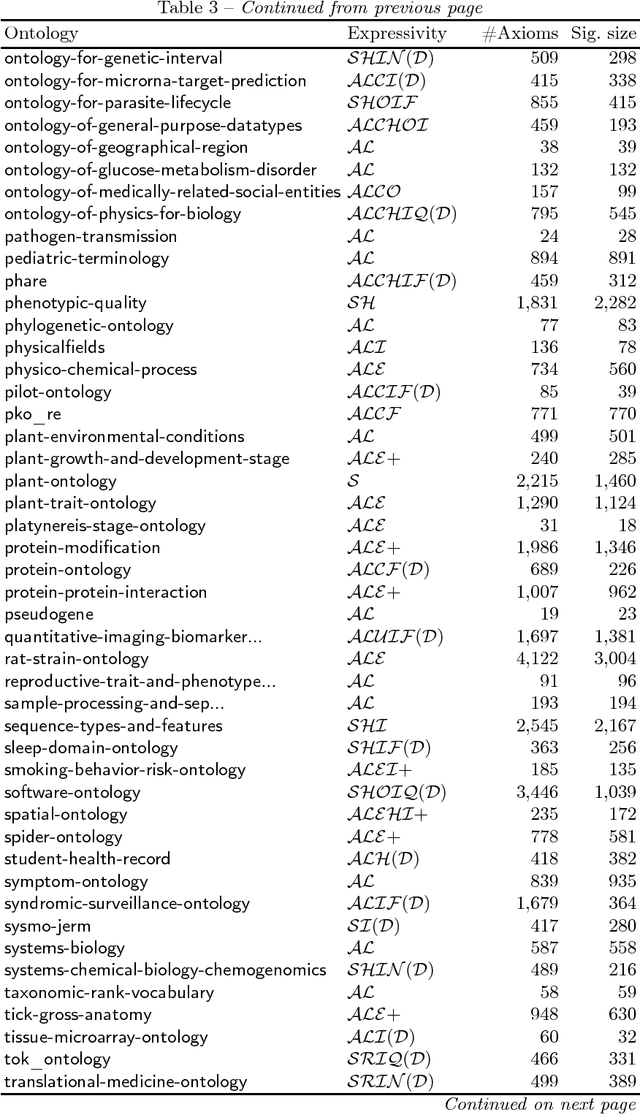
Abstract:Extracting a subset of a given OWL ontology that captures all the ontology's knowledge about a specified set of terms is a well-understood task. This task can be based, for instance, on locality-based modules (LBMs). These come in two flavours, syntactic and semantic, and a syntactic LBM is known to contain the corresponding semantic LBM. For syntactic LBMs, polynomial extraction algorithms are known, implemented in the OWL API, and being used. In contrast, extracting semantic LBMs involves reasoning, which is intractable for OWL 2 DL, and these algorithms had not been implemented yet for expressive ontology languages. We present the first implementation of semantic LBMs and report on experiments that compare them with syntactic LBMs extracted from real-life ontologies. Our study reveals whether semantic LBMs are worth the additional extraction effort, compared with syntactic LBMs.
 Add to Chrome
Add to Chrome Add to Firefox
Add to Firefox Add to Edge
Add to Edge